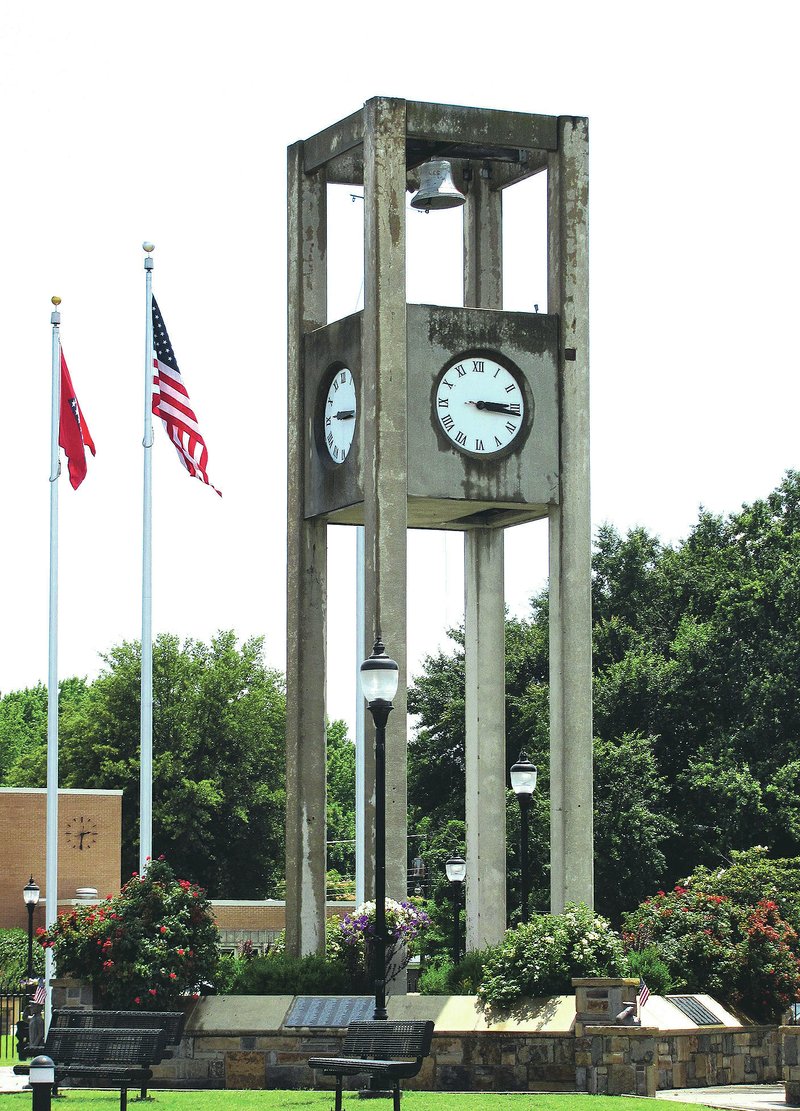GREENWOOD -- A clock tower was dedicated in the Greenwood square 39 years ago as a memorial to 13 people killed when a tornado devastated the town April 19, 1968.
Inside the tower, the builders installed the clock and bell that had been atop a three-story 1916 courthouse before it was destroyed by the tornado.
But for years that clock has not worked, despite periodic efforts to revive its nearly 100-year-old rusting metal mechanism. The unmoving clock hands have been placed at 3:16, the moment the tornado hit that afternoon.
City Parks Director Richard McKinney said many younger Greenwood residents have never known the clock to run and have never heard the tolling of the 450-pound bronze bell that came from the McShane Bell Foundry in Glen Burnie, Md.
"It's on the city's logo for crying out loud," City Alderman Tim Terry said of the importance of the clock to the city.
City Clerk Sharla Derry said she often hears residents say they wish the clock would work again.
The dormant clock and tower sit in the middle of the town square, which was converted two years ago into the Veterans Memorial Square and Patriots Walk. The park features 750 plaques etched with the names of veterans whose families have paid for the stones.
"It needs attention," Derry said.
McKinney reported to the Parks Commission last week that the clock can be repaired for about $52,000.
The commission allocated $23,600 this year for the clock, and McKinney and commission chairman Joel Goldstein plan to approach the City Council at its meeting July 6 to ask for about $28,000 to help pay for the repairs.
The council has expressed its support for reviving the clock and the concrete tower, which has weakened with time and weather.
Alderman Lee Johnson called the clock tower iconic but said the main question before the council would be the cost of fixing it. If money to pay for the repairs is available, he said, he believes the council would like to preserve the clock and tower.
"I feel quite certain it will get the full support from the council," Terry said.
McKinney told the Parks Commission that Steve Beam Construction of Fort Smith could shore up the clock tower by drilling holes in it and injecting epoxy.
After the tower was built, McKinney said, there was nothing done to protect the concrete structure against deterioration. Moisture got into the 18-inch-square pillars, and cracks formed and widened.
The epoxy will harden the pillars and seal them against further cracking and deterioration, McKinney said.
He said Beam estimated that the structural work would cost $19,900.
The next phase of the work, he said, would cost $16,690. That would entail removing the rotting wooden crossbeams that support the bell and striker. The wood would be replaced with tubular steel. The bell, which was painted at one point, would be stripped to expose the bronze so it could develop its own patina, he said.
The bell striker, which would no longer be functional, could be sanded and put back in place for appearance's sake, he said.
A representative from The Verdin Co. of Cincinnati, which McKinney said has been making clocks since 1842, inspected the clock last week and recommended installing new clock mechanisms at a cost of $13,545.
McKinney said the Verdin agent recommended new electronic mechanisms, one for each of the four faces, that would be synchronized and controlled by computer from a box at ground level. Having the controls at ground level would eliminate the need for someone to climb a ladder to the clock.
The electronic clockworks would remove the need for the obsolete metal gearbox and shafts. McKinney said the old clockworks still could be preserved and put on display.
McKinney said the electronic clock would automatically change the time for daylight saving and standard time. The tolling of the bell could be programmed to ring how and when the city wants. The bell could even be programmed not to toll at night, he said.
The four polycarbonate plastic clock faces are in good condition, McKinney said, but the numbers need touching up. The city could choose the style of hands it wants for the clocks.
McKinney said the company would send along detailed instructions and a technical adviser, but the work would be done by the city.
If all went as planned, he said, the tower could be stabilized and the clock could be working by the end of the year.
State Desk on 06/21/2015

